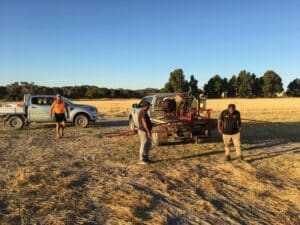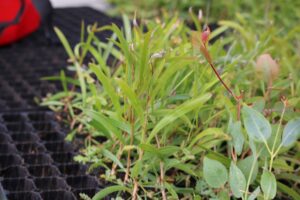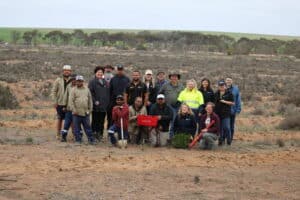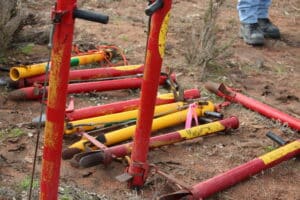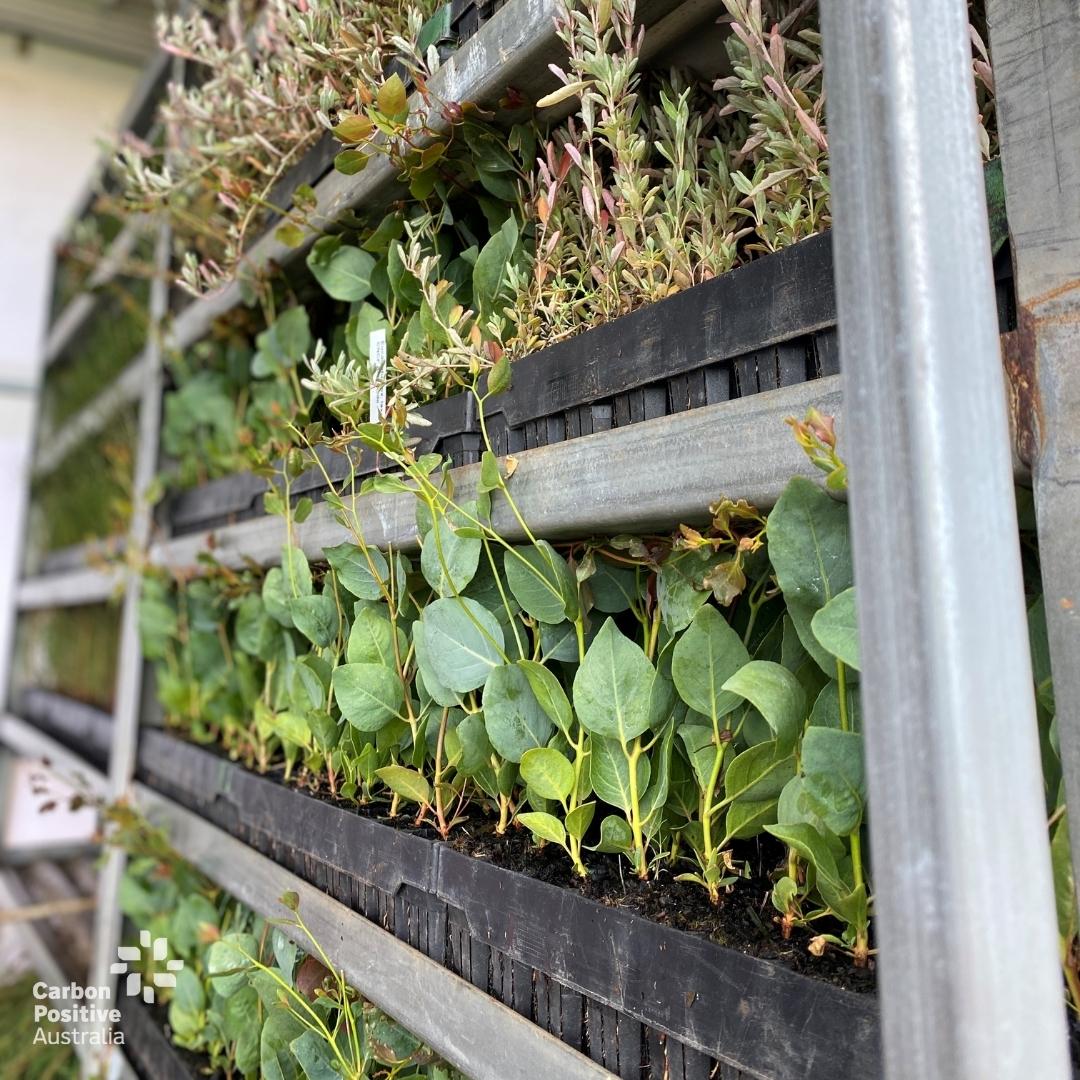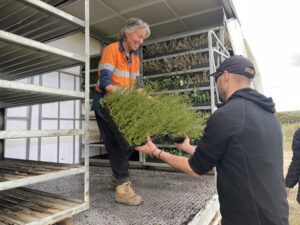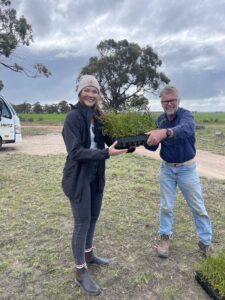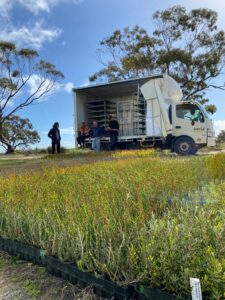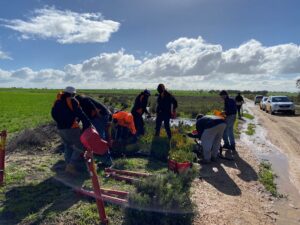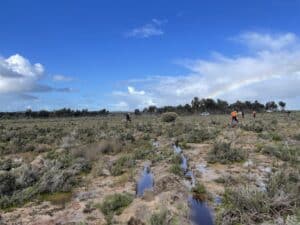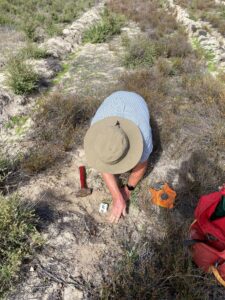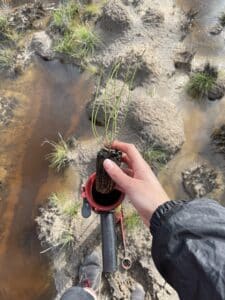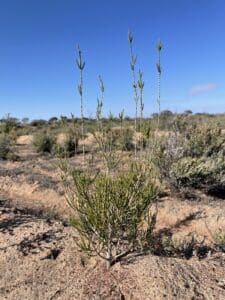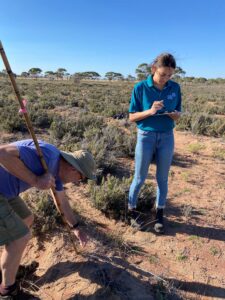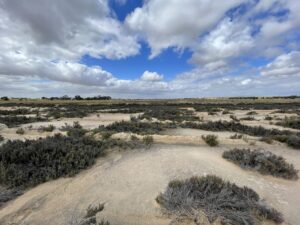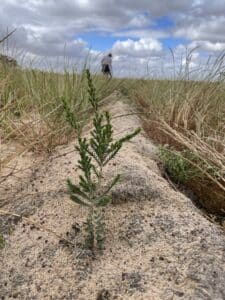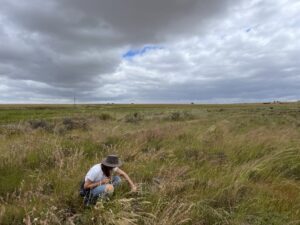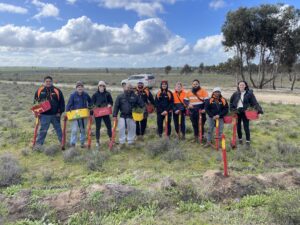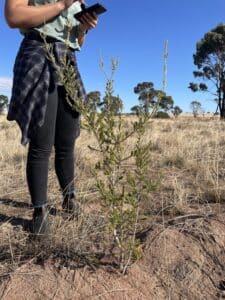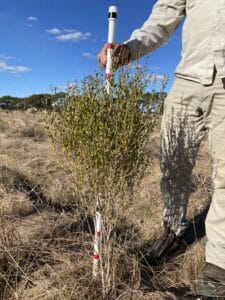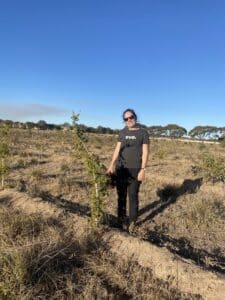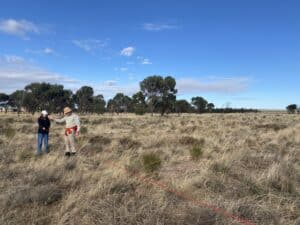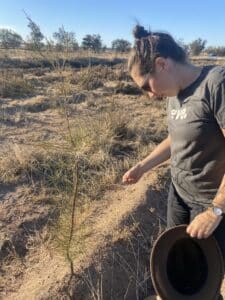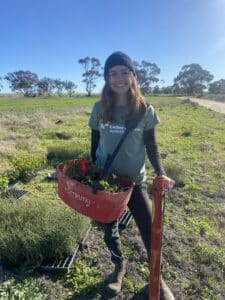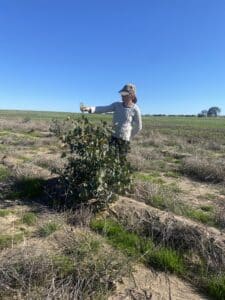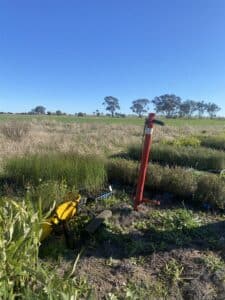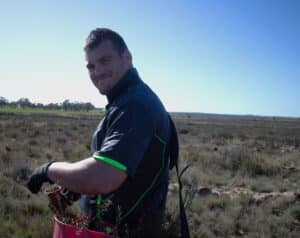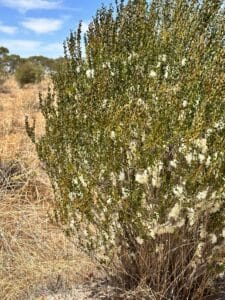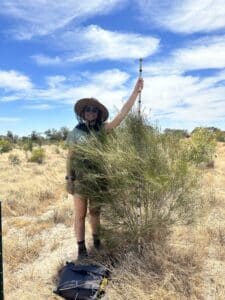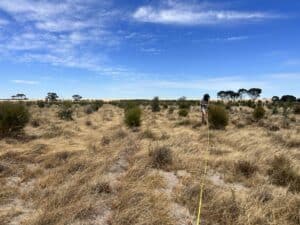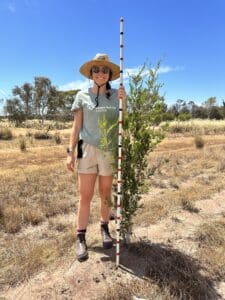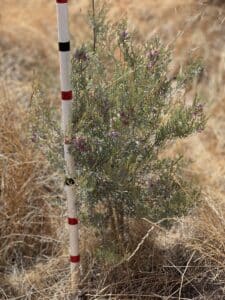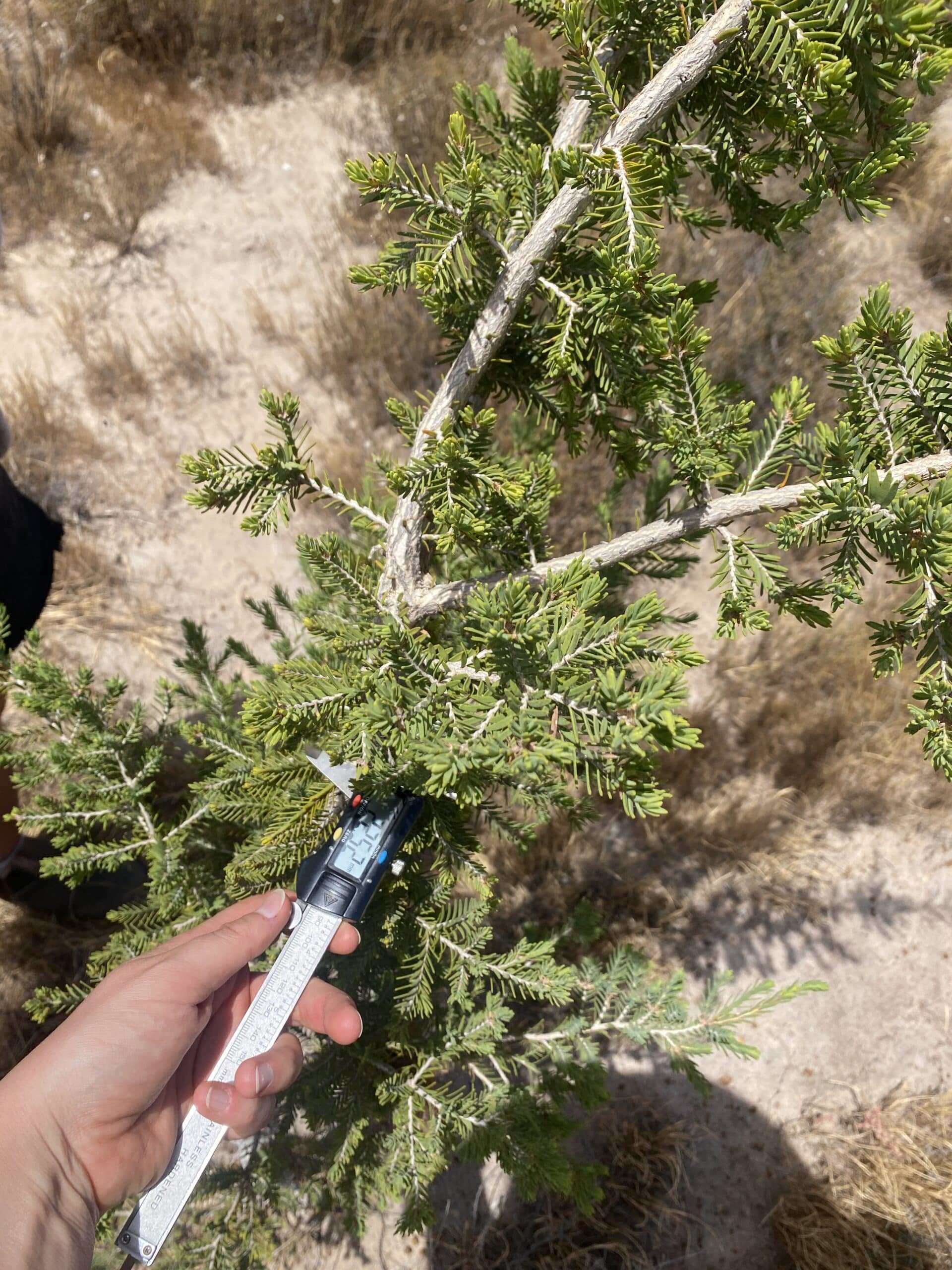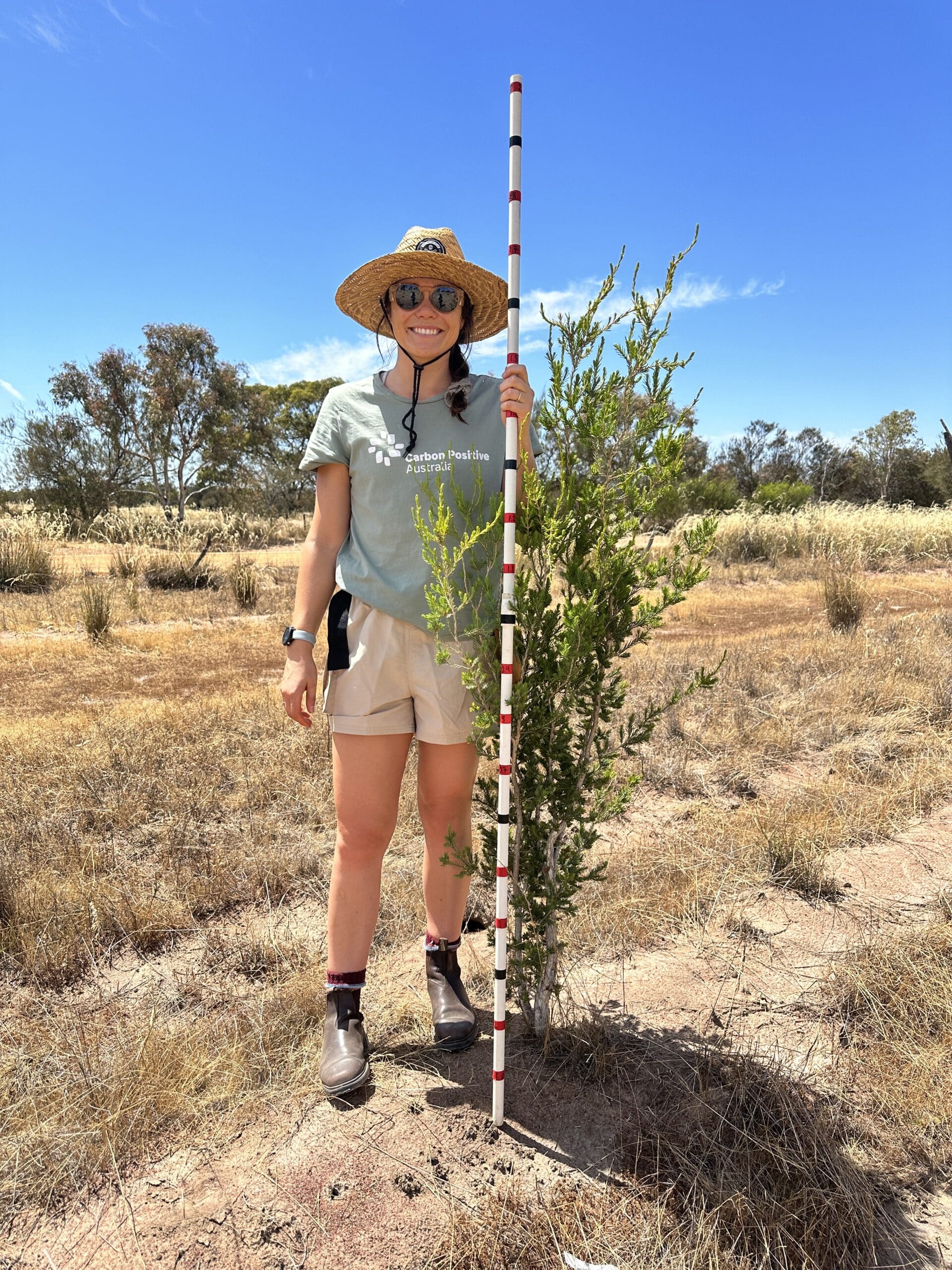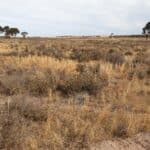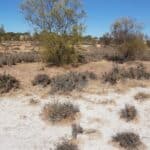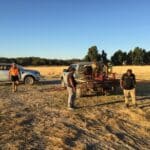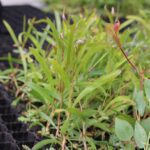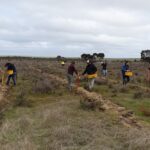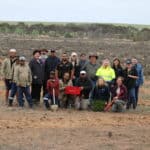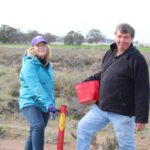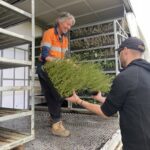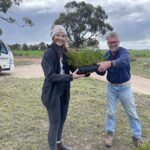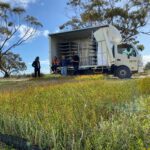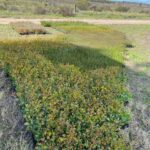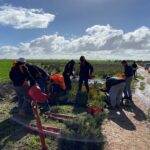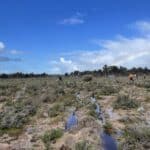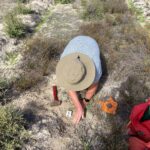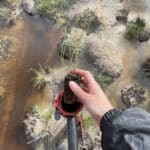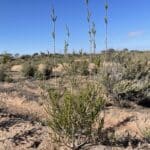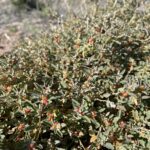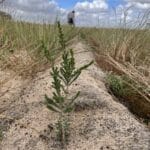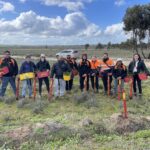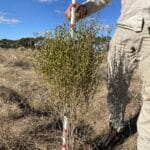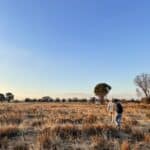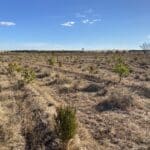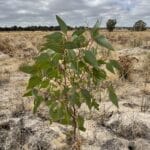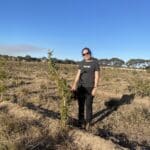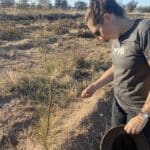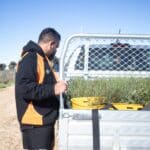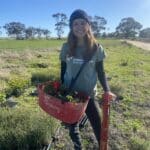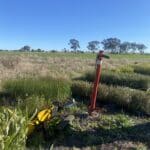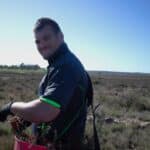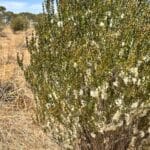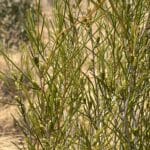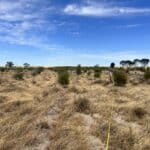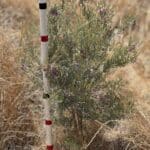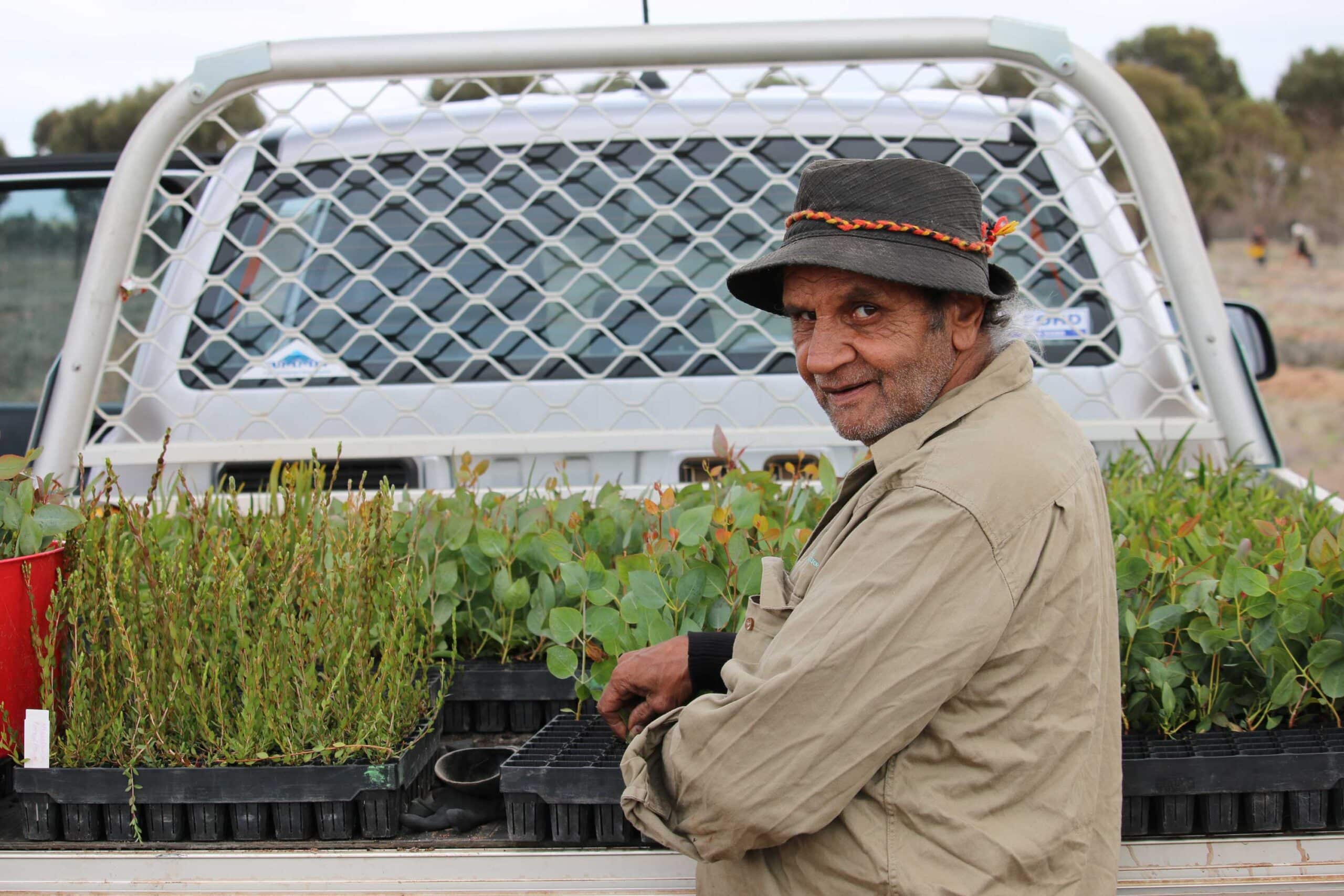
Ballardong Noongar Country
Brookton Saltland, WA
Located in the WA Wheatbelt, this planting site is part of a larger property owned by a local farming family. Due to the clearing of native vegetation and grazing of stock over many generations, much of the land in this region is affected by salinity and erosion. The landholders are particularly concerned with the rising water table and salinization of adjacent cropping land.
We are working with Dr Peter Ritson from FarmWoods to restore this area using a specifically designed mix of salt-tolerant native species including Atriplex (‘Salt bush’), Melaleuca, Eucalyptus, and Casuarina species.
Project overview
- Planting type: Saltland Carbon
- Region: Wheatbelt, WA
- Planted: 2019, 2020, 2021 and 2022
- Size: 28.5 hectares
- Seedling count: 38,341
- Supported by: State Natural Resource Management Program
- Partner: FarmWoods, Noongar Budjar Rangers (Wheatbelt NRM)
- ERF registered: No
- Legal permanence: 30 years
Latest news
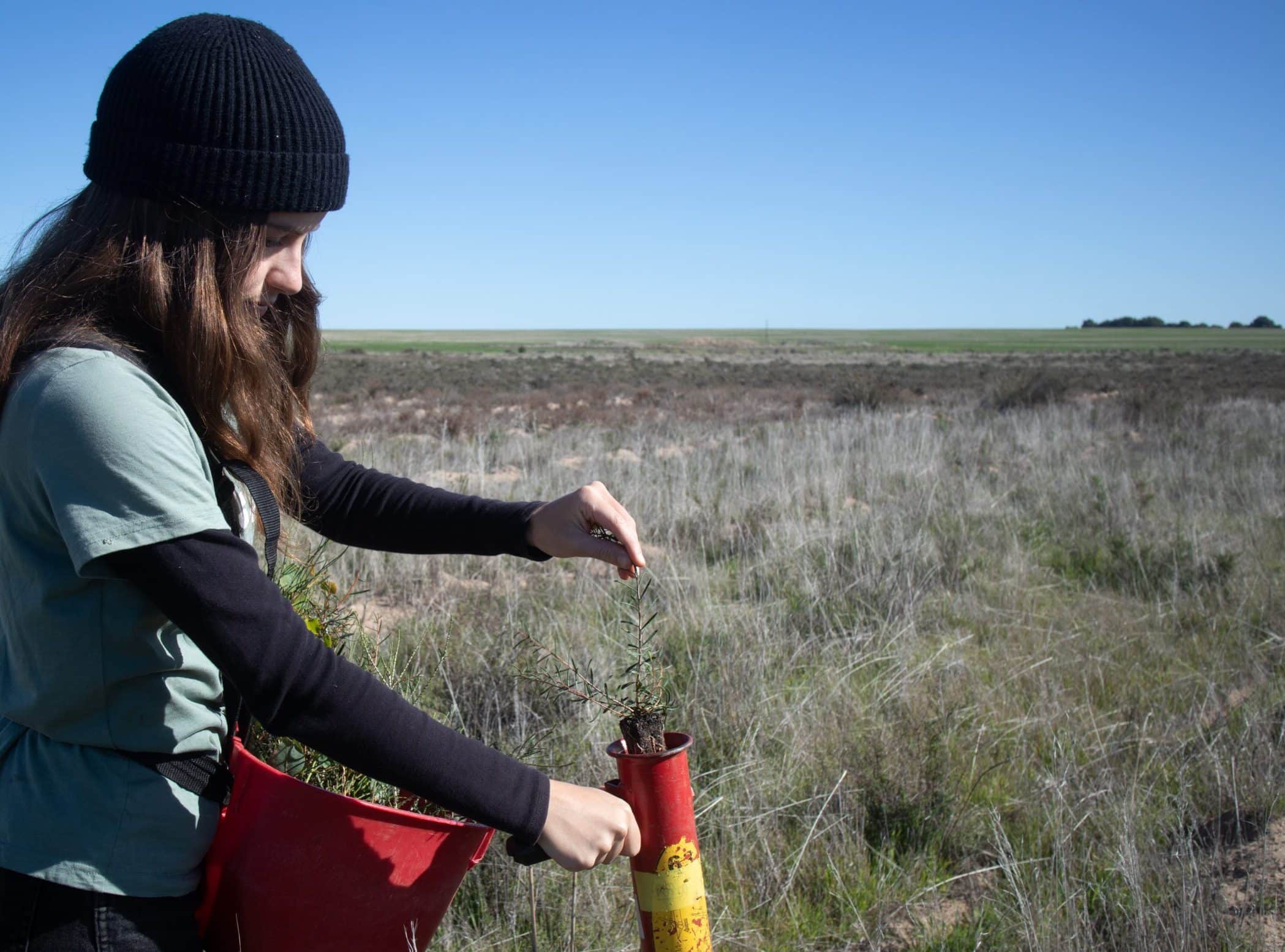
July 2022
Further infill planting was carried out in winter by the Noongar Budjar Ranges and members of the CPOZ team. Approximately 4,000 seedlings were hand-planted across the 2021 area to increase the density in patches that had suffered from waterlogging. We will return to the site later this year for the annual monitoring assessment.
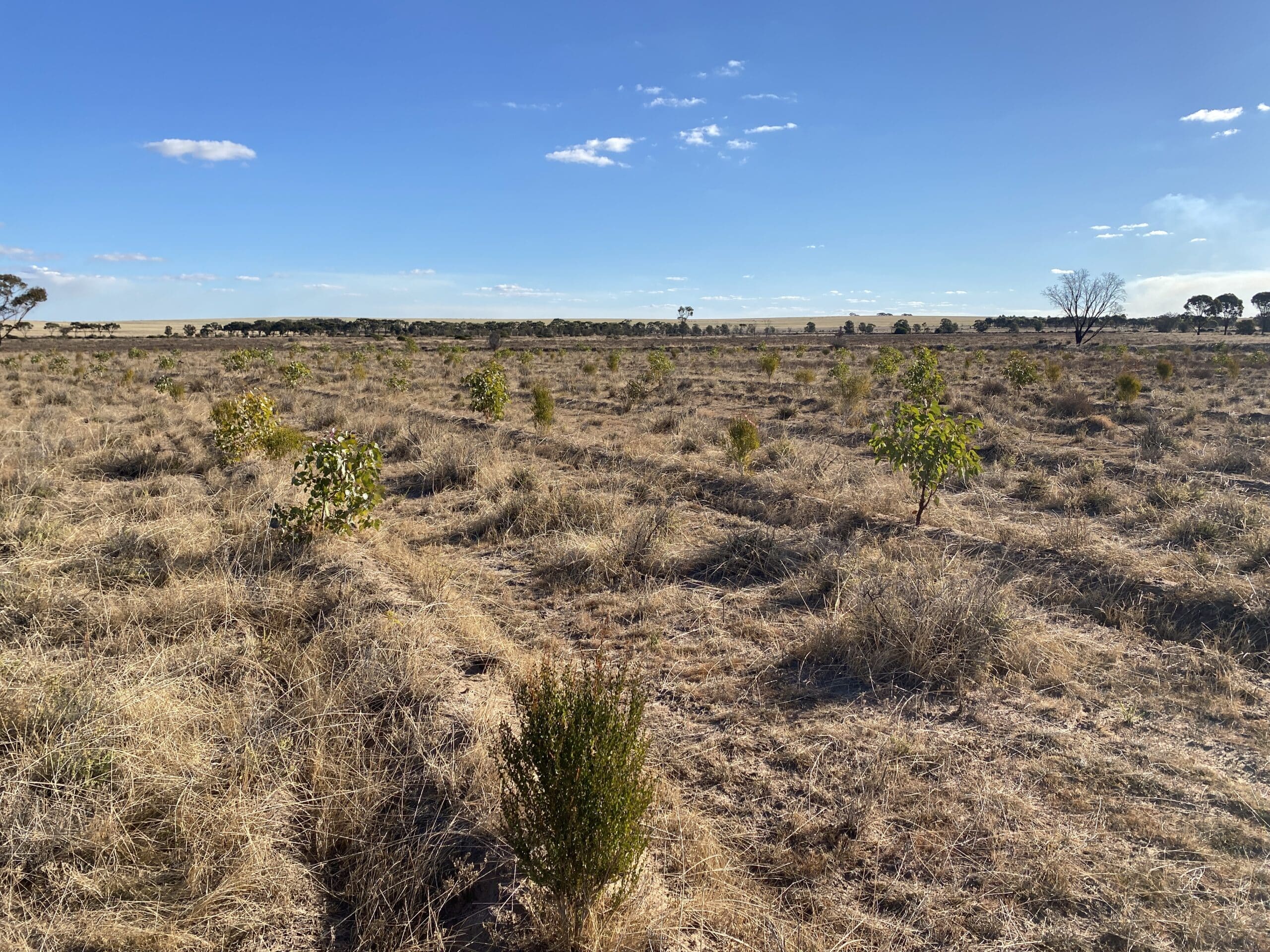
April 2022
Dr Peter Ritson and the CPOZ team headed to the site in April to complete a third monitoring assessment. Results showed that the average density had increased by 28% from 2021, at 688 trees/ha. The tallest seedlings (Acacia acuminate, Cauarina obesa, and Eucalyptus loxophleba equally) were 1.2 metres.
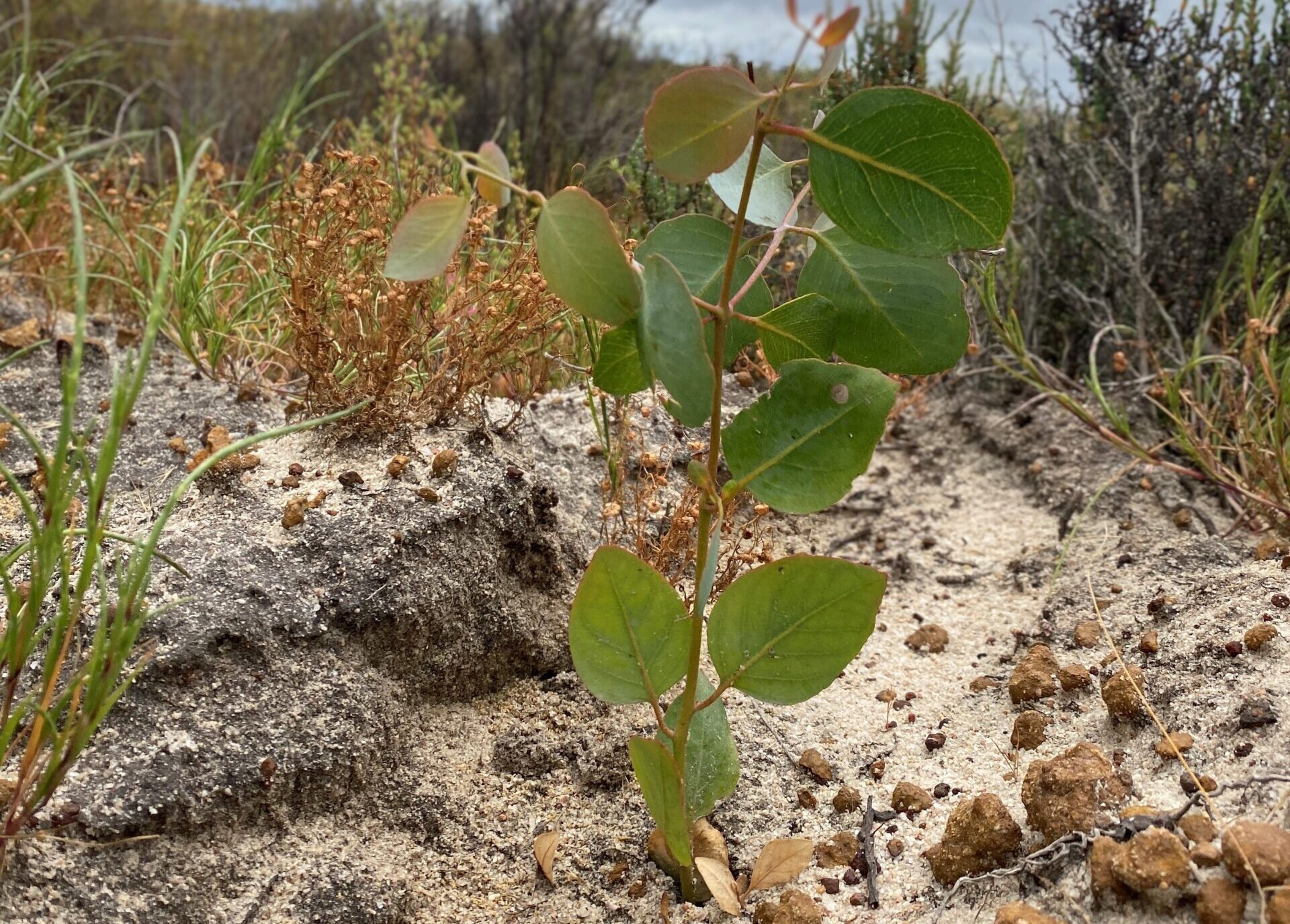
October 2021
Survival monitoring of the most recent planting area (8.5ha) was conducted by the CPOZ team in October 2021. The overall survival rate was approximately 65%. There had been significant rainfall in the area and the team noted visible signs of water pooling across the site. Survival rates in these areas of the planting was very low leading to a further 3,900 seedlings ordered for infill in the patchy areas.
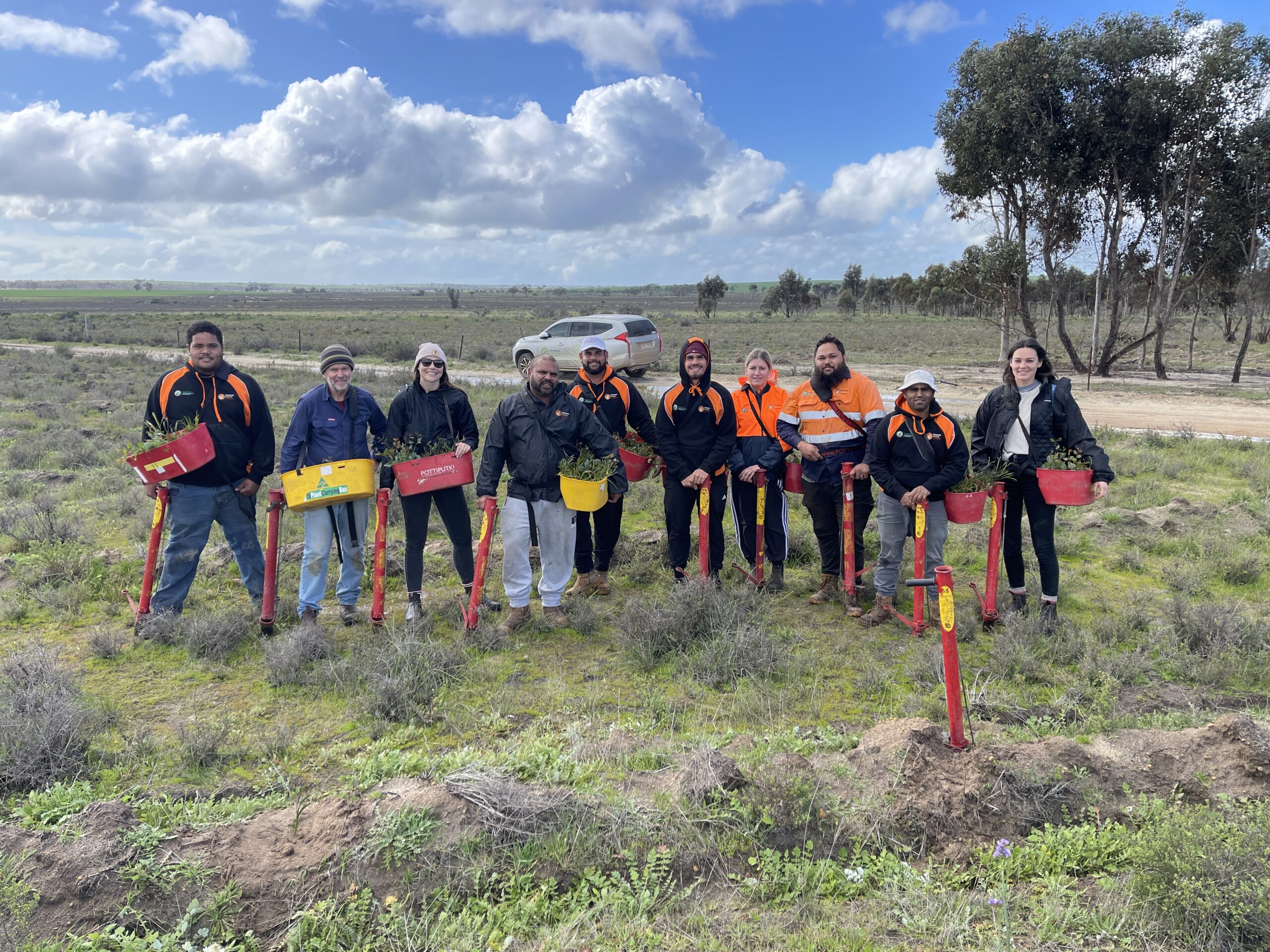
July 2021
Team members Jess and Alice headed to site to accept the infill seedling delivery. Along with Dr Peter Ritson, who oversaw the planting, Jess, Alice, and the Noongar Budjar Ranges planted a further 8.5 hectares of the Saltland area. A total of 15,552 seedlings were hand-planted across this new area and infilled across the 2019 and 2020 areas to increase density.

April 2021
Jess and Alice (CPOZ) joined Dr Peter Ritson on site to monitor the progress of the 2019 and 2020 planting areas. Evidence of pest damage (likely kangaroos) was noted and some areas showed patchy survival and health. Further infill was recommended for the coming winter. Of all species, Atriplex semibaccata (‘Berry saltbush’) exhibited the highest survival and growth rates.
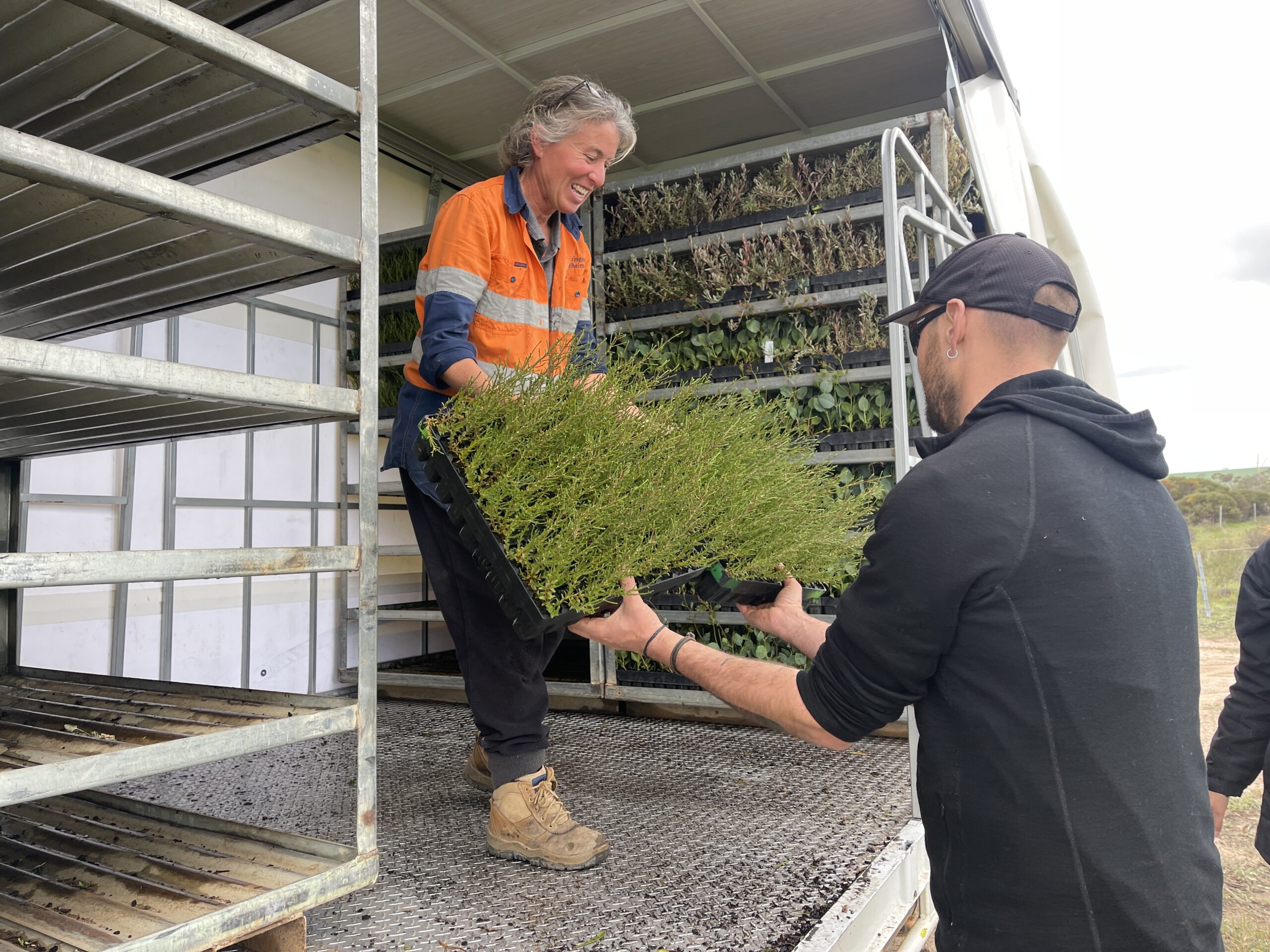
July 2020
During winter, approximately 6,500 seedlings were planted across the site. These new seedlings replaced those that had not survived the harsh conditions since the initial planting. Casuarina and Atriplex species formed the bulk of the planting mix as they had shown the highest survival and growth during the last monitoring assessment.
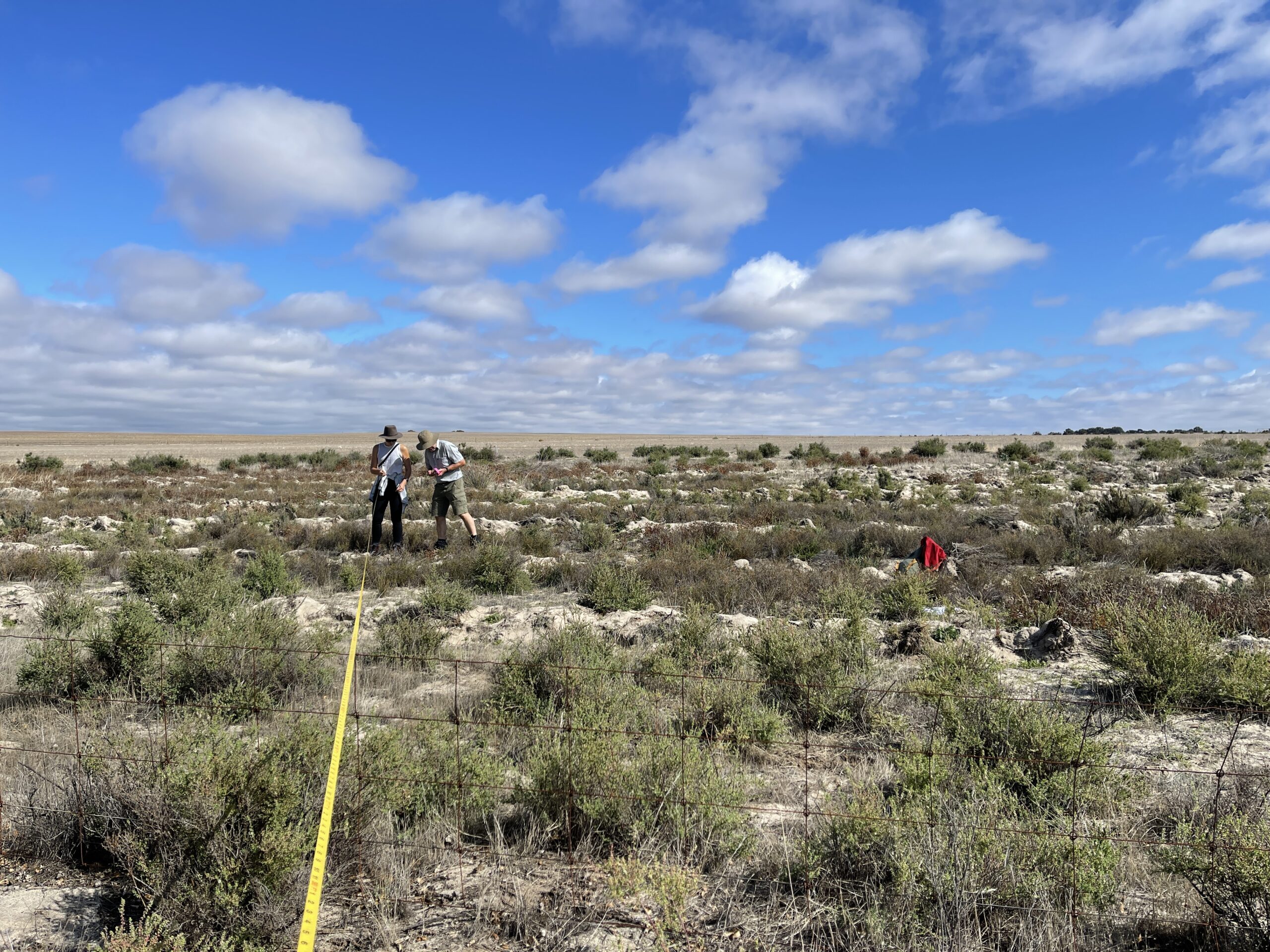
May 2020
Dr Peter Ritson visited the site for a comprehensive monitoring assessment to determine seedling survival and growth. Overall, survival was estimated to be around 41%, with the lower salt-tolerant species struggling the most. Unfortunately, given the below average rainfall since the time of planting, this level of mortality did not come as a surprise. Infill planting was recommended for the coming winter.
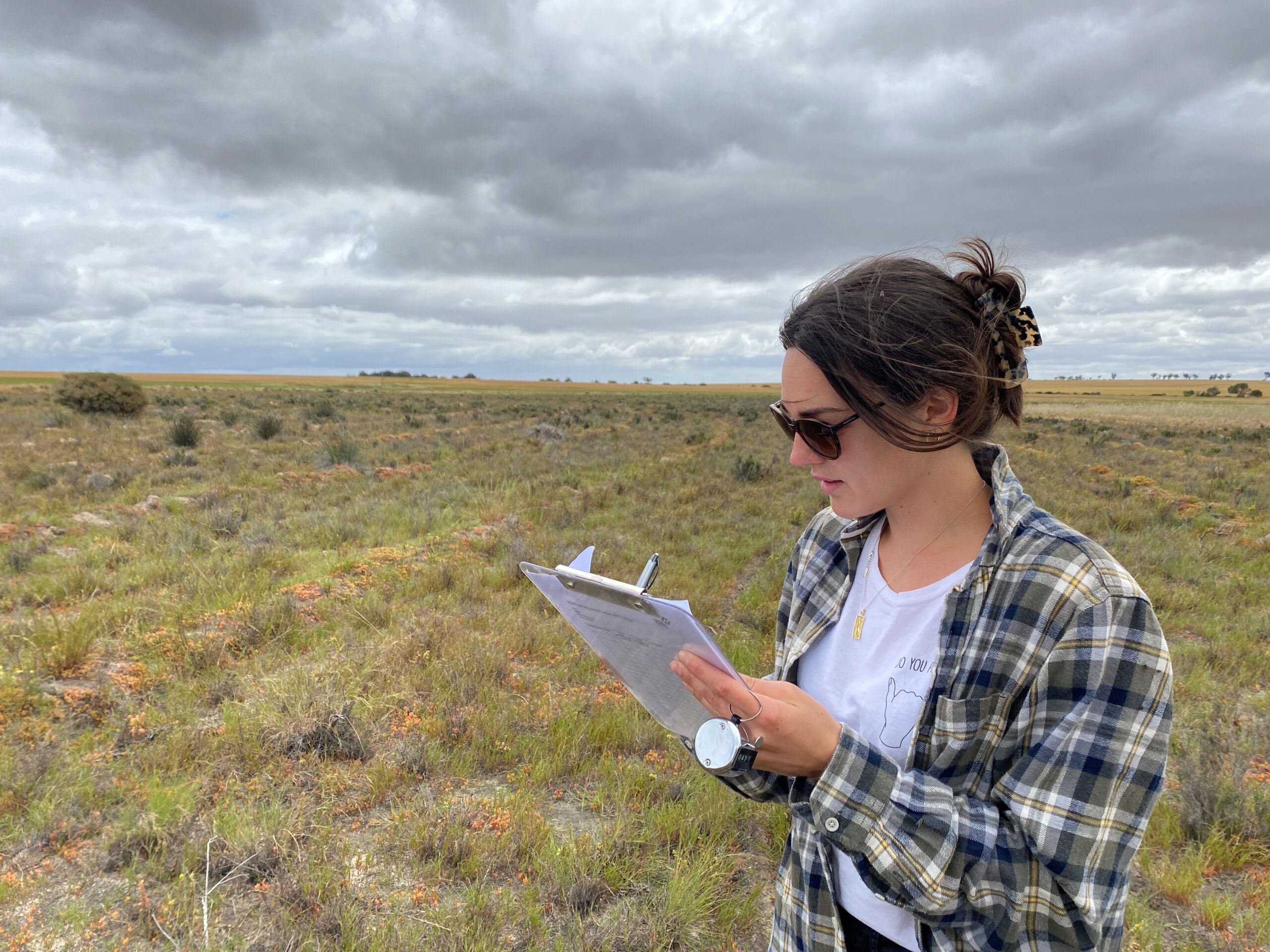
November 2019
Survival monitoring was undertaken for the initial 13,000 seedlings planted in July. Results showed survival rates ranging from 54% to 80% across the area, with an overall average of 69%. Many of the seedlings showed signs of drought stress and substantial mortality was predicted for the coming summer months. Close monitoring would be necessary and the need for infill in July was advised.

July 2019
Under the expert guidance of Dr Peter Ritson (FarmWoods), the Noongar Budjar Rangers and other Wheatbelt NRM team members planted around 13,000 seedlings across the 12 hectare site. Seedlings were planted into the mounds using pottiputkis (an ergonomic tree-planting device). These handy tools make fast and comfortable work of a planting area.
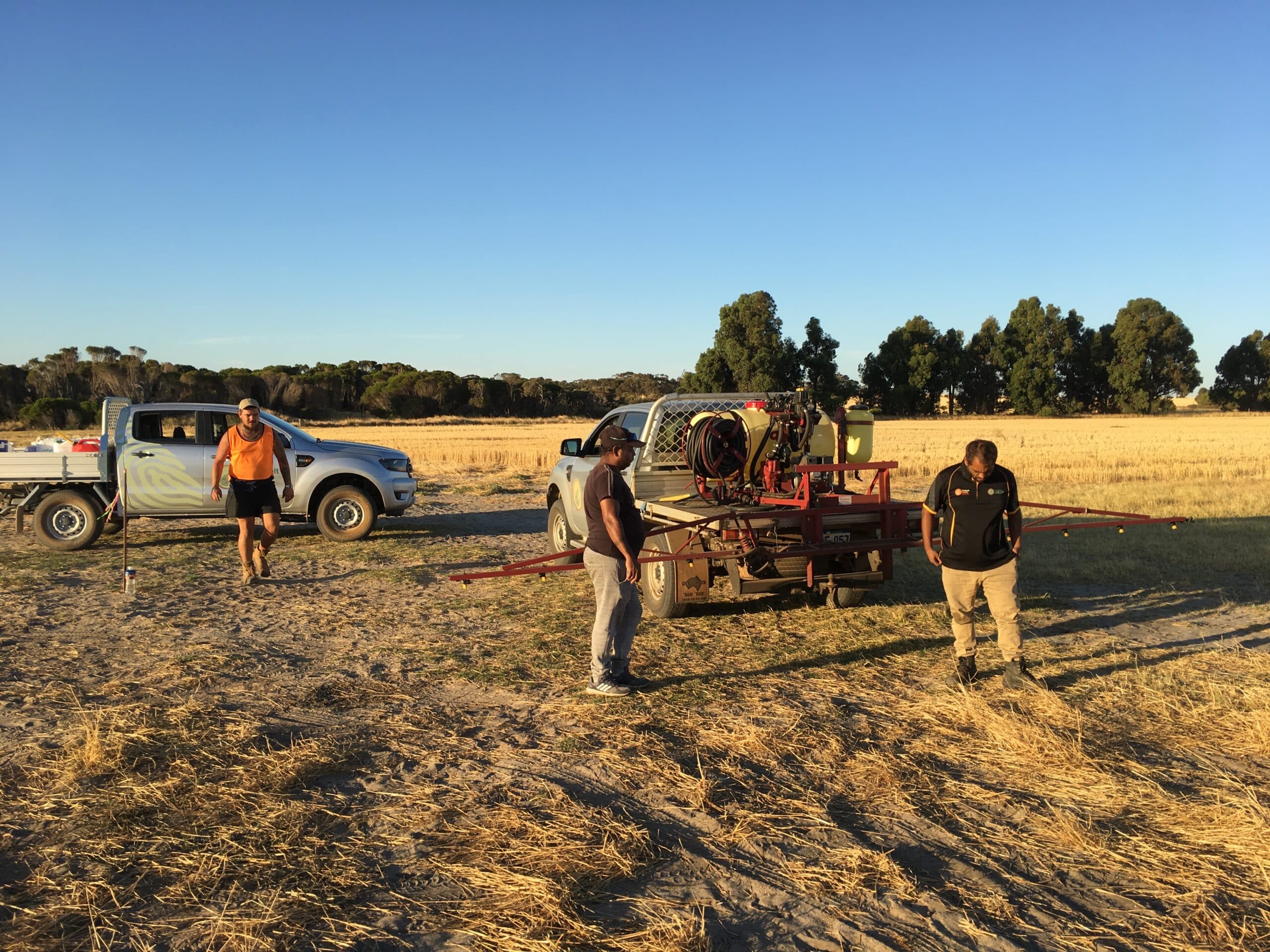
July 2019
Winter came around and the Wheatbelt NRM Noongar Budjar Rangers were engaged to assist with site preparation. The site was sprayed to control perennial weeds and mounded into rows. This practice reduces root system exposure to salinity and water logging as well as minimising competition to weeds, improving the likelihood of seedling survival and establishment.
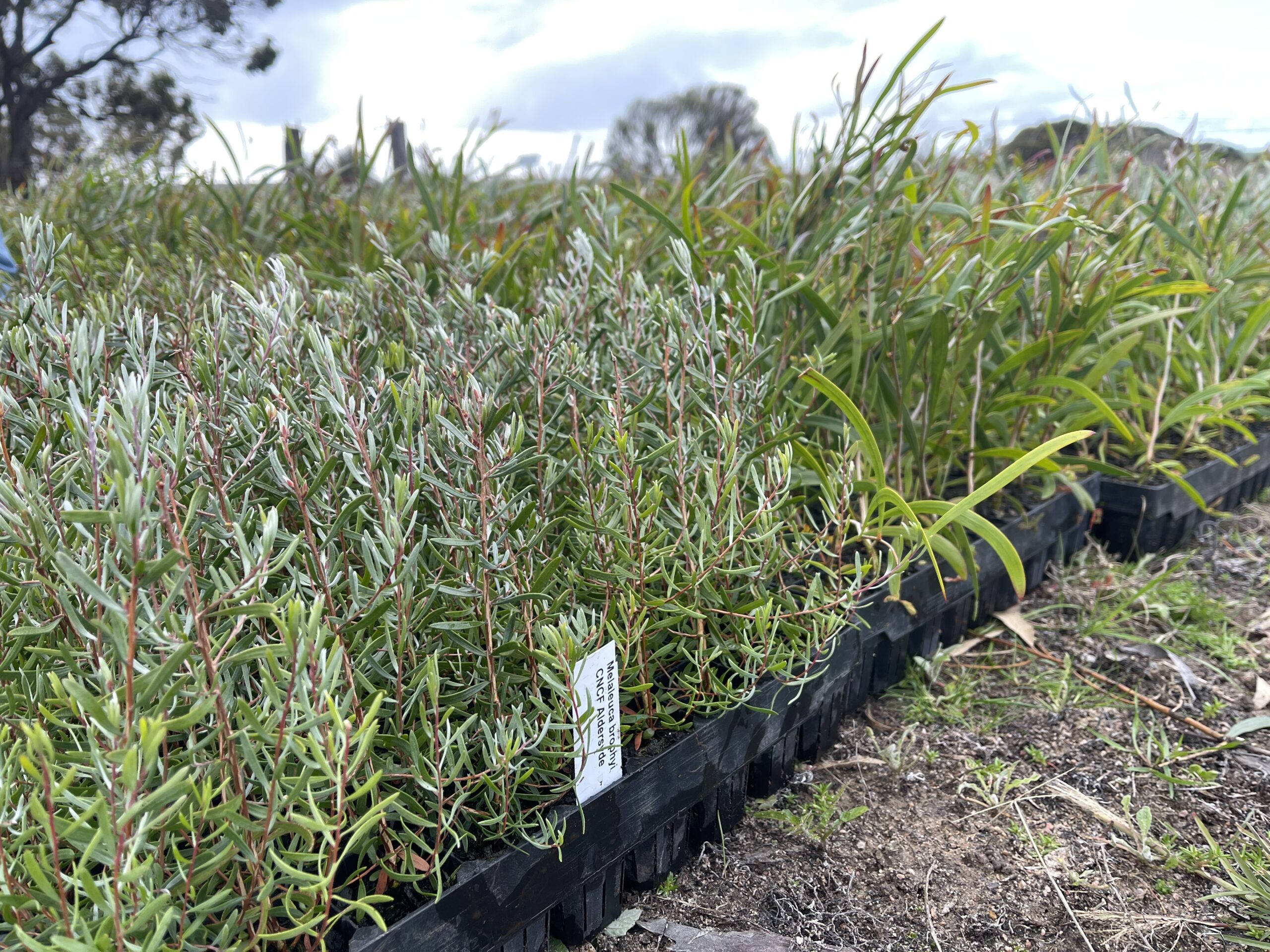
December 2018
As suggested, species selection incorporated a range of salt-tolerant species including Atriplex semibaccata (‘Berry saltbush’), Casuarina obesa (‘Swamp sheoak’), and Melaleuca cuticularis (‘Saltwater paperbark’). Seedlings were ordered and grown out at Parnell’s Nursery over the summer and autumn months, ready for planting in the following winter.

November 2018
The project kicked off with an initial site assessment conducted by leading WA reforestation expert, Dr Geoff Woodall. Much of the planting area that had been selected for restoration by the landholders was visibly salt-affected. With the looming issue of saline soils and waterlogging, the assessment included recommendations for planting methodology, species selection, and ongoing site management.
What we planted
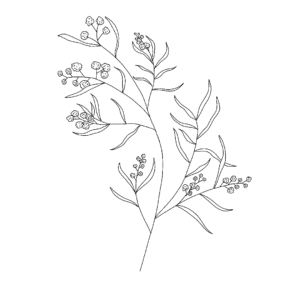
Acacia
1 species
sandalwood host
short lifespan
nitrogen fixing
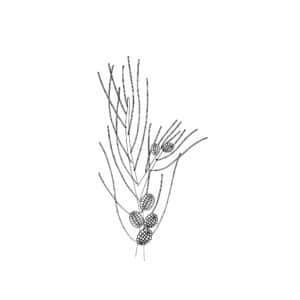
Atriplex
1 species
low-lying shrub
salt-tolerant
drought tolerant
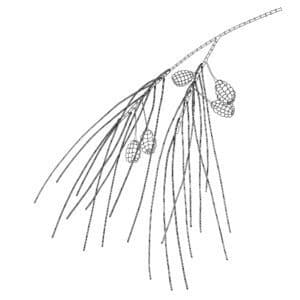
Casuarina
1 species
salt and drought tolerant
attracts native birds
nitrogen converter
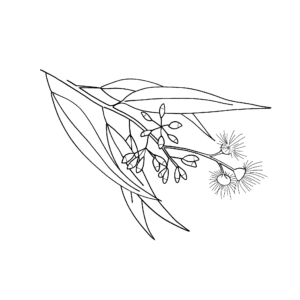
Eucalyptus
1 species
high survivability in nutrient-poor soils
fast maturing tree
utilised for canopy cover

Melaleuca
5 species
fire-adapted
salt-tolerant
tree
Project gallery


